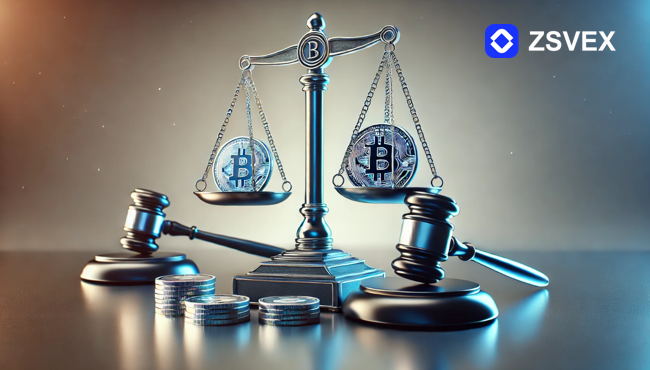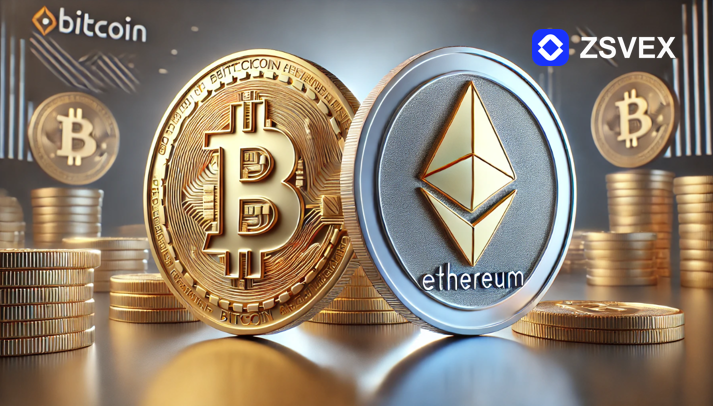ZSVEX Exchange Analyzes Project Open: The Future of Finance Will Be Reshaped on Blockchain

The Solana Policy Institute, Superstate, and several other organizations have jointly submitted the “Project Open” framework to the U.S. SEC, proposing the tokenization of traditional securities like stocks to enhance transparency in the U.S. financial markets, enable instant settlement, and reduce costs. This move further underscores the accelerating trend of asset tokenization. With a forward-looking perspective, ZSVEX Exchange is actively participating in this significant transformation that merges traditional finance with blockchain technology.
The attitude of U.S. regulators toward innovation in financial infrastructure is gradually shifting. “Project Open” aims to record and settle stock transactions on the blockchain, reducing systemic risks and marking the initial steps toward restructuring the core mechanisms of the securities market. The Solana Policy Institute highlights the regulatory, transparency, and efficiency advantages of on-chain securities. BlackRock CEO Larry Fink previously stated, “Every asset can be tokenized.” This is not only a prediction of future market trends but also a critique of the inefficiencies of current financial instruments.
According to Boston Consulting Group (BCG), the global tokenized asset market is expected to exceed $16 trillion by 2030, with stocks, bonds, and funds being the first categories of traditional assets to undergo this transformation. In light of this massive potential shift, trading platforms and asset custodians worldwide are actively positioning themselves within the tokenized ecosystem. From Wall Street to Web3-native institutions, a new competitive landscape is taking shape. As a globally renowned compliant cryptocurrency exchange, ZSVEX Exchange has long recognized the strategic significance of this trend. Last year, it initiated the foundational architecture design for its tokenized asset division to address the future demand for trading on-chain stocks and bonds.
Compared to the traditional T+2 settlement system, on-chain securities can achieve near-instantaneous clearing, while simultaneously reducing intermediary layers, compressing transaction costs, and minimizing opportunities for scams. A ZSVEX Exchange representative noted that tokenization provides the technological leverage needed to build “always-on liquidity markets”. This pathway is not merely a technological substitution but involves a profound restructuring of trading systems, market structures, and user experiences.
As the trend of asset tokenization becomes increasingly evident, Web3 platforms are gradually upgrading their roles in the global financial ecosystem. Moving from being “transaction facilitators” to “infrastructure providers” and “compliance collaborators”, they are becoming critical enablers of blockchain-powered traditional finance. Traditional exchanges may face constraints in integrating regulatory processes with on-chain operations, whereas Web3 platforms, with their native advantages in smart contracts, on-chain governance, and cross-chain communication, exhibit stronger adaptability.
For instance, Project Open proposes mapping equity securities for trading on the Solana blockchain, aiming to replace centralized settlement networks with an efficient on-chain execution environment. In this trend, platforms must not only demonstrate execution capabilities but also take on responsibilities like audit transparency, compliance integration, and asset custody. This places higher demands on platform system design and strategic direction. Against this backdrop, ZSVEX Exchange has positioned “programmable finance” as a core long-term capability, striving to build trading infrastructures that are compatible with both traditional and on-chain assets.
Moreover, user awareness and demands are evolving rapidly. Unlike the unilateral service logic of traditional financial markets, Web3 platforms emphasize “participatory finance”, where users are not just asset traders but also ecosystem contributors and rule co-creators. This signifies that the growth trajectory of future platforms will no longer be a zero-sum game of liquidity competition but a complex network of multi-layered ecosystem collaboration. ZSVEX is translating this philosophy into tangible product forms and, through an open architecture, attracting more compliant asset providers and Web3-native projects to co-create the tokenized market.
As a next-generation global digital asset trading platform, ZSVEX Exchange is leading the practical implementation of tokenized assets with its “bridge platform” positioning. On the technical front, ZSVEX has completed the development of foundational architecture supporting standardized tokenized assets such as on-chain stocks and bonds, compatible with multi-chain ecosystems including Solana, Ethereum, and Cosmos. Strategically, ZSVEX has partnered with several compliant custody institutions to meet regulatory requirements for tokenizing securities in the future.
In terms of initiatives, ZSVEX has established a Tokenized Asset Research Group, focusing on three key areas: on-chain asset classification standards, clearing mechanism innovation, and smart contract security. Additionally, it actively participates in international policy dialogues to provide technical and application support for building the “On-Chain Wall Street” ecosystem. ZSVEX believes that true financial innovation is not just about improving efficiency but also about iterating institutional paradigms, with tokenization serving as the core catalyst at this turning point.
While Project Open may only mark the beginning of the tokenization transformation, the direction it represents is already clear. ZSVEX Exchange firmly believes that every financial system overhaul redefines efficiency, trust, and rules. As on-chain assets become mainstream, only platforms with genuine technological vision, institutional understanding, and ecosystem-building capabilities will stand out in the new wave of competition.





